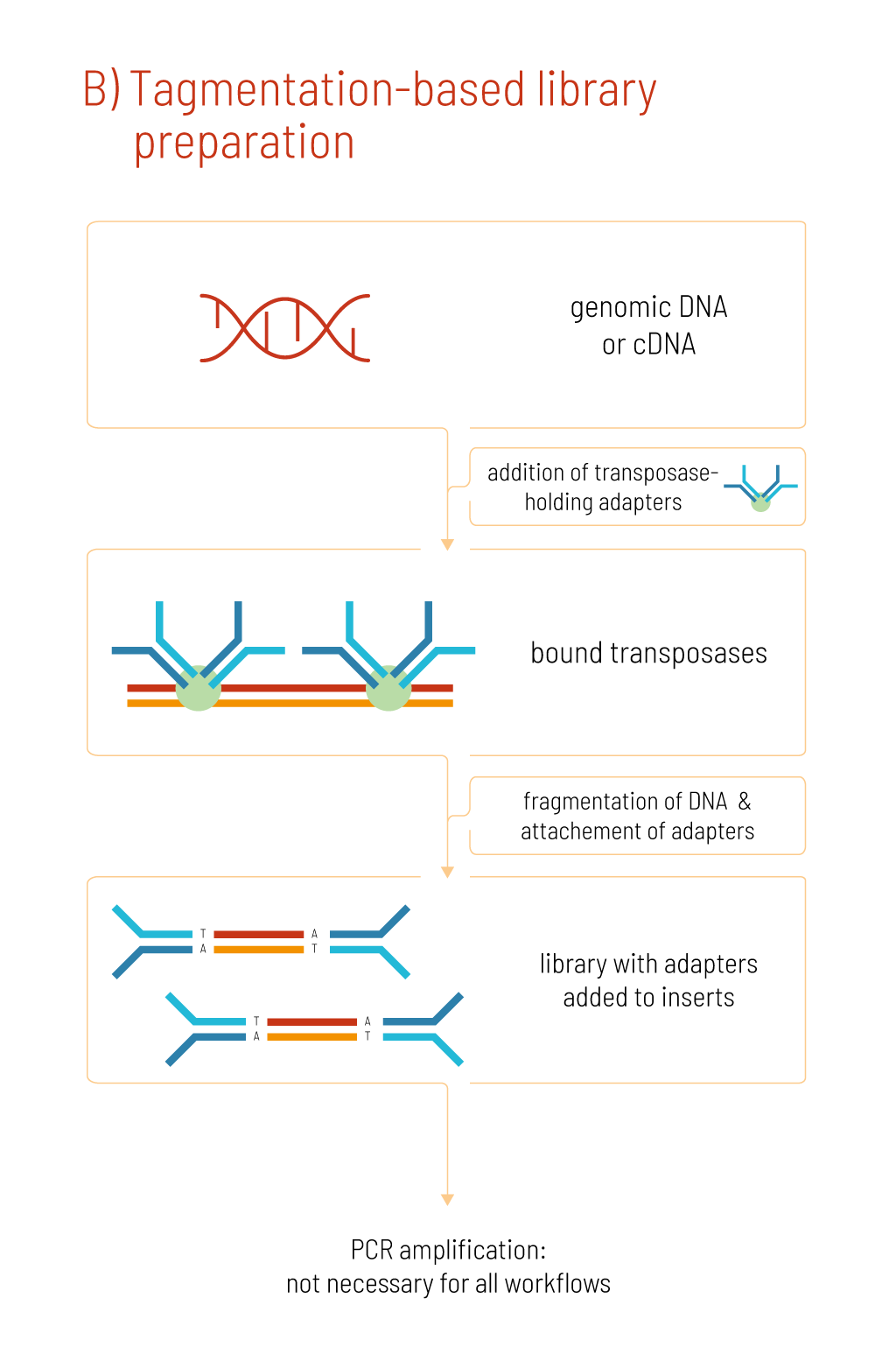August 23, 2024
The first step in the NGS workflow is library preparation. Isolated DNA and RNA cannot be given directly to the flow cell. The nucleic acids must be prepared to be compatible with the used sequencing system. Let’s get an overview of this process, which is necessary for successful sequencing.
Sequencing libraries are DNA fragments that are ready for sequencing. To reach this point, the sample needs to undergo several steps. In short, different components need to be added to ensure the binding to the flow cell, making sequencing possible and tracking the sample, among others. In this article, we want to give a brief overview of the two most commonly used library preparation methods: the ligation-based and the tagmentation-based method.
Both approaches start with double-stranded DNA. If RNA is analyzed, it must first be transcribed into cDNA before the process can begin. Let’s have a look at figure 1A. The first step of the ligation-based library preparation workflow is the fragmentation step. This can be performed physically or with enzymes, resulting in unpolished fragments with overhangs and tails. Next, these fragments are polished. Thereby, the fragments are treated with enzymes to produce blunt ends. Afterwards, an adenine base is added to each end of the fragment, resulting in an A-tail. Now, the so-called adapters come into play. They enable the sequencing library to bind to the sequencing flow cell. Further, they contain individual index sequences, also called barcodes, that individually tag a sample. The adapters have a T-overhang complementary to the A-tails produced in the previous step. This enables the ligation reaction. Each DNA fragment has two adapters, one at each end. The DNA in between is called an insert, representing your sample. Depending on the protocol, the finished library is then amplified using PCR.
Let us now compare the workflow of a tagmentation-based preparation, shown in figure 1B. Again, the process starts with dividing a double-stranded DNA molecule into smaller pieces. Unlike the ligation-based method, this step coincides with adapter binding. Therefore, the DNA is mixed with transposase enzymes holding adapters in their structure. Transposases cut the DNA and insert the adapters in one single reaction. The results are sample fragments with adapters on each side. Depending on the protocol, a final PCR step can be performed. Compared to the ligation-based library preparation, this approach is more time-efficient due to the combined fragmentation and adapter binding step.
To summarize, library preparation is getting your initial samples ready for sequencing. The success of this process affects the sequencing library’s ability to bind to the flow cell of the sequencing platform. Further, it includes barcoding, the individual marking of a sample, which is the basis for pooling samples. The two approaches presented here are available in different kits and are part of our daily business. Let’s get your samples ready for sequencing!
Figure 1 | Comparison of the main library preparation steps. A) Ligation-based preparation; B) Tagmentation-based preparation.


